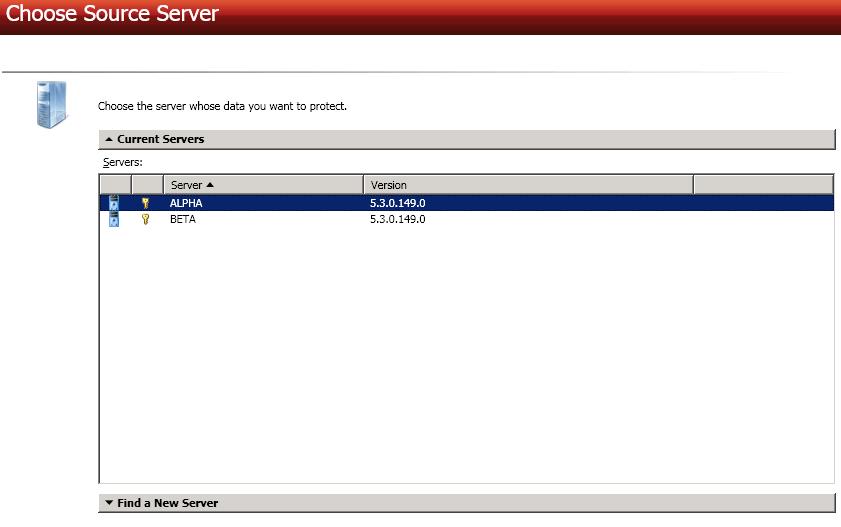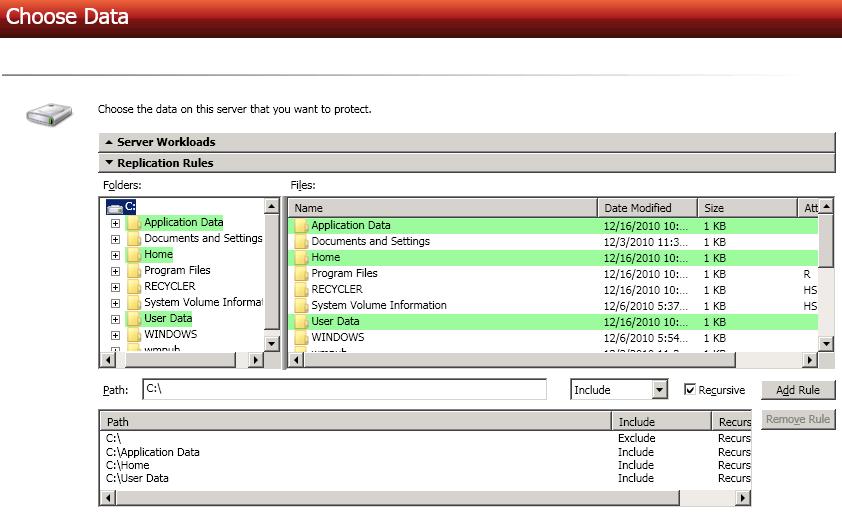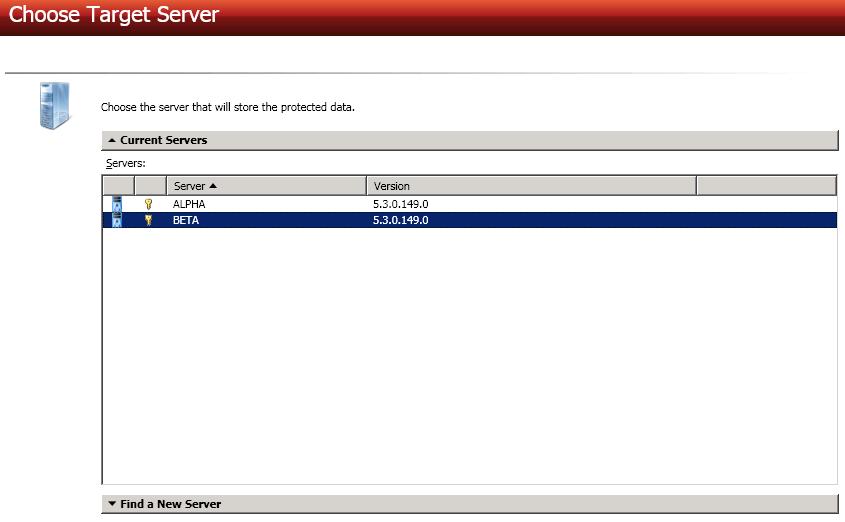

|
Use these instructions to protect your files and folders.
Choose your source server. This is the server that contains the files and folder that you want to protect.

To best prepare for a potential failover, restore, and failback scenario, you may want to use a source server that has been inserted into the console by a private IP address. In this scenario, your source must have at least two IP addresses, one for public communication and one for private. If you insert your source in the console using the private IP address, then that private IP address can more easily be used after a failure to restore the data that changed during failover from the target back to the source. If your source server has already been inserted into the console by name, you can remove it and reinsert it by private IP address on the Manage Servers page.
If you want to select your files and folders in more detail, click the Replication Rules heading and expand the volumes under Folders. Items with a green highlight are included in the protection. Items highlighted in yellow have a subset of the items included in the protection. If there is no highlight, the item is not included for protection. To modify the items selected for protection, highlight a volume, folder, or file and click Add Rule. You can also enter a rule, including a wildcard specification, manually. Specify if you want to Include or Exclude the item from protection. Also, specify if you want the rule to be recursive, which indicates the rule should automatically be applied to the subdirectories of the specified path. If you do not select Recurse, the rule will not be applied to subdirectories.
If you need to remove a rule, highlight it in the list at the bottom and click Remove Rule. Be careful when removing rules. Double-Take Availability may create multiple rules when you are adding directories. For example, if you add C:\Data to be included in protection, then C:\ will be excluded. If you remove the C:\ exclusion rule, then C:\Data rule will be removed also.

Choose your target server. This is the server that will store the replica data from the source.

You have many options available for your files and folders job. Configure those options that are applicable to your environment.
Click a link below to see the options available for that section of the Set Options page.
Double-Take Availability validates that your source and target are compatible for your job type. The Summary page displays the options you selected in your workflow and any additional validation items.
Errors are designated by a white X inside a red circle. Warnings are designated by a black exclamation point (!) inside a yellow triangle. A successful validation is designated by a white checkmark inside a green circle. Click on any of the validation items to see details. You must correct any errors before you can enable protection. Depending on the error, you may be able to click Fix or Fix All and let Double-Take Availability correct the problem for you. For those errors that Double-Take Availability cannot correct automatically, you will need to modify the source or target to correct the error, or you can select a different target. You must revalidate the selected servers, by clicking Recheck, until the validation check passes without errors.